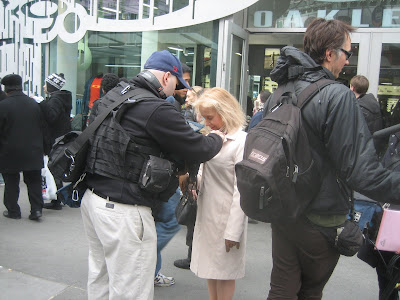 In 1997, I co-authored with Dr. Stavros Siokos, the book, Financial Networks: Statics and Dynamics, and financial networks are very hot now as both a topic in research and practice due to the financial crisis.
In 1997, I co-authored with Dr. Stavros Siokos, the book, Financial Networks: Statics and Dynamics, and financial networks are very hot now as both a topic in research and practice due to the financial crisis.Dr. Siokos had been one of my doctoral students, and I had chaired his dissertation in Operations Research. I am a faculty member in the Isenberg School but have also supervised several doctoral dissertations in the College of Engineering, since I hold courtesy appointments in two departments there. Dr. Siokos is originally from Greece and he needed to complete his dissertation in the College of Engineering at UMass Amherst (rather than in Management Science) in order not to serve in the Greek army. The title of his dissertation was: International multi-sector, multi-instrument financial modeling and computation: Statics and dynamics, Department of Industrial Engineering and Operations Research, University of Massachusetts Amherst, 1998.
Together we had co-authored papers which had appeared in such journals as Networks and Annals of Operations Research.
He has had a meteoric career in finance and serves as a Center Associate of the Virtual Center for Supernetworks that I direct at the Isenberg School of Management.
Dr. Siokos has now been appointed President of Sciens Fund of Hedge Funds Management (which is a fund of funds) and had previously served as a non-executive member of Sciens. This reminds me of supernetwoks, which are "networks of networks."
Dr. Siokos served for many years as the Managing Director within the equities division of Citigroup in London, where he was Global Head of Alternative Execution Sales (program trading, algorithmic trading, Direct Market Access), Global Head of portfolio trading strategies as well as head of the company's pension funds and insurance companies equity structured solutions in Europe. He, since April 2008, until now, was the Deputy General Manager & Head of Asset management, Private Banking, Private Equity & Alternative Investments of Piraeus Bank in Athens, Greece. He has been top ranked in most of the major European Investment and Alternative Execution surveys in the quantitative services sector over the last nine years.
Several of my former doctoral students have achieved the rank of Full Professor as academics and I can now say that a former doctoral student of mine is now a President!
I could not be prouder and like to think that it is the methodologies that he learned and advanced in operations research and the management sciences that have enabled him to flourish in financial services at the global level and to be responsible for a fund worth billions of dollars.




















































